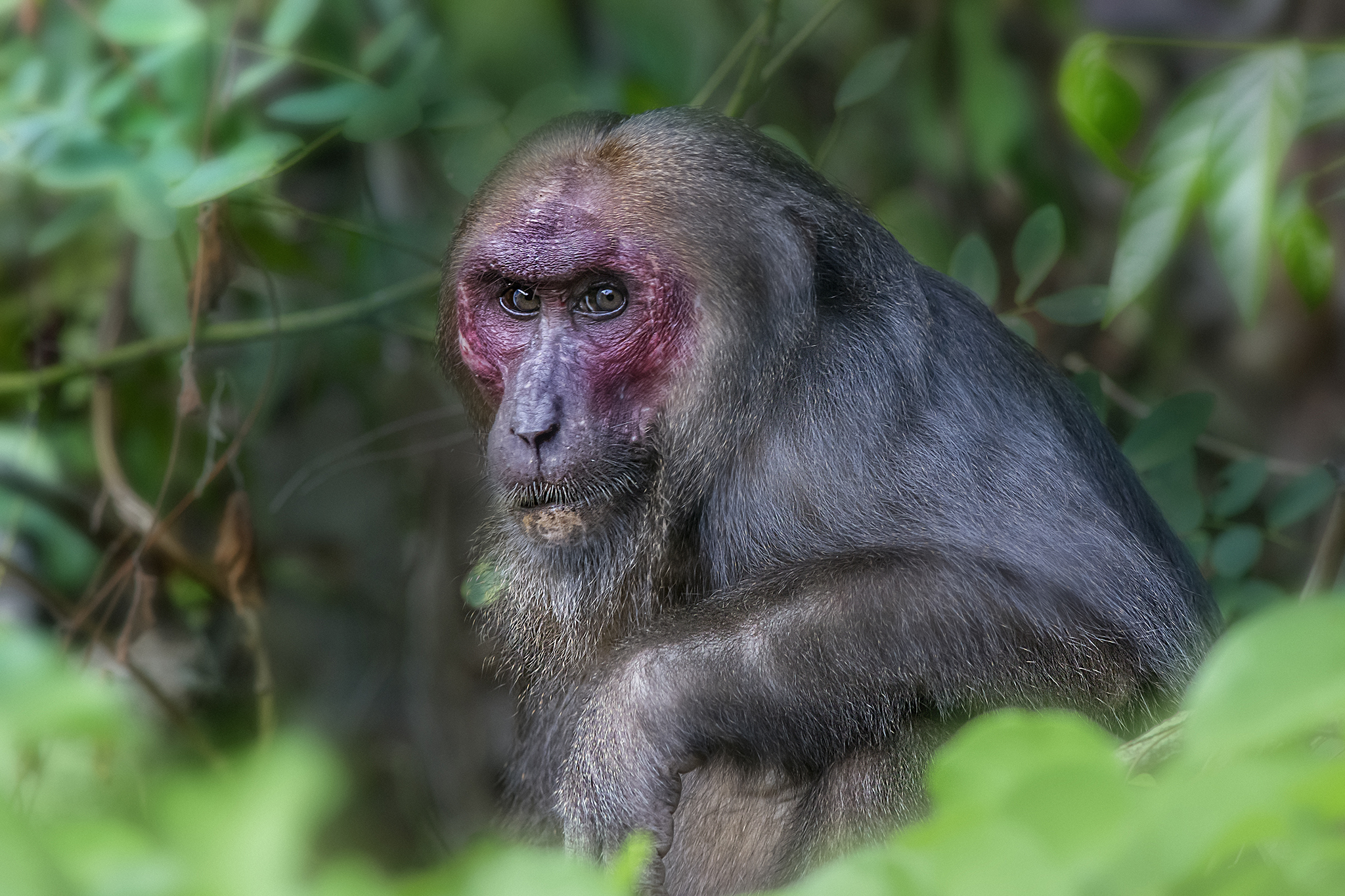Here’s a comprehensive overview of the Stump-tailed Macaque (Macaca arctoides):
🐒 Stump-tailed Macaque (Macaca arctoides)
Taxonomy:
- Order: Primates
- Family: Cercopithecidae (Old World Monkeys)
- Genus: Macaca
- Species: Macaca arctoides
🧠 Identification
The Stump-tailed Macaque, also known as the Bear Macaque, is a robust, medium-to-large primate recognized by its reddish face, short tail, and dense brown fur that gives it a somewhat “bear-like” appearance.
- Body length: 45–65 cm
- Tail: 3–8 cm (short and inconspicuous)
- Weight: 6–10 kg (males heavier than females)
Adults have a bare, red to dark pink face, which becomes brighter during social interactions or reproductive periods. Older individuals often display balding on the forehead and crown, exposing the red skin beneath.
🌏 Distribution and Habitat
Macaca arctoides inhabits Southeast and South Asia, ranging from northeastern India, Bangladesh, and southern China through Myanmar, Thailand, Laos, Vietnam, Cambodia, and peninsular Malaysia.
It occupies evergreen and mixed deciduous forests, from lowlands up to 2,000 meters in elevation, often preferring dense, humid forests with abundant fruiting trees.
🌿 Diet
This macaque is omnivorous, feeding on:
- Fruits, seeds, and young leaves
- Insects, small vertebrates, and bird eggs
- Roots and tubers when fruit is scarce
It plays a vital role as a seed disperser in tropical forests, contributing to ecosystem regeneration.
🐾 Behavior and Social Structure
Stump-tailed macaques live in large multi-male, multi-female groups (10–60 individuals).
- Female-bonded societies: Females form stable matrilines, while males migrate between groups.
- Dominance hierarchies: Clear rank structures exist, though aggression is often followed by reconciliation grooming.
- Terrestrial lifestyle: They spend much time on the forest floor but are capable climbers.
Communication includes facial expressions, vocal calls, and body postures — with red facial coloration also serving as a visual signal.
🍼 Reproduction
Breeding occurs year-round in tropical populations, with gestation lasting about 6 months.
Females give birth to a single infant, which clings to the mother’s belly for several weeks. Young are weaned at about one year of age.
Females reach sexual maturity around 4–5 years, males at 6–7 years.
⚙️ Special Adaptations
- Short tail reduces risk of injury in dense vegetation.
- Thick fur suited to cooler montane forests.
- Strong limbs adapted for both climbing and terrestrial foraging.
🌍 Conservation Status
- IUCN Red List: Vulnerable
- Threats: Habitat destruction, hunting for bushmeat, and illegal wildlife trade.
Although adaptable, the species is increasingly confined to protected reserves. Populations are stable only where forest connectivity and anti-poaching efforts are maintained.
📏 Key Facts
- Length: 45–65 cm
- Tail: 3–8 cm
- Weight: 6–10 kg
- Lifespan: Up to 30 years (in captivity)
- Habitat: Tropical and subtropical forests
- Range: South and Southeast Asia
- Conservation: Vulnerable
Views: 1305
Subscribe to the newsletter:
